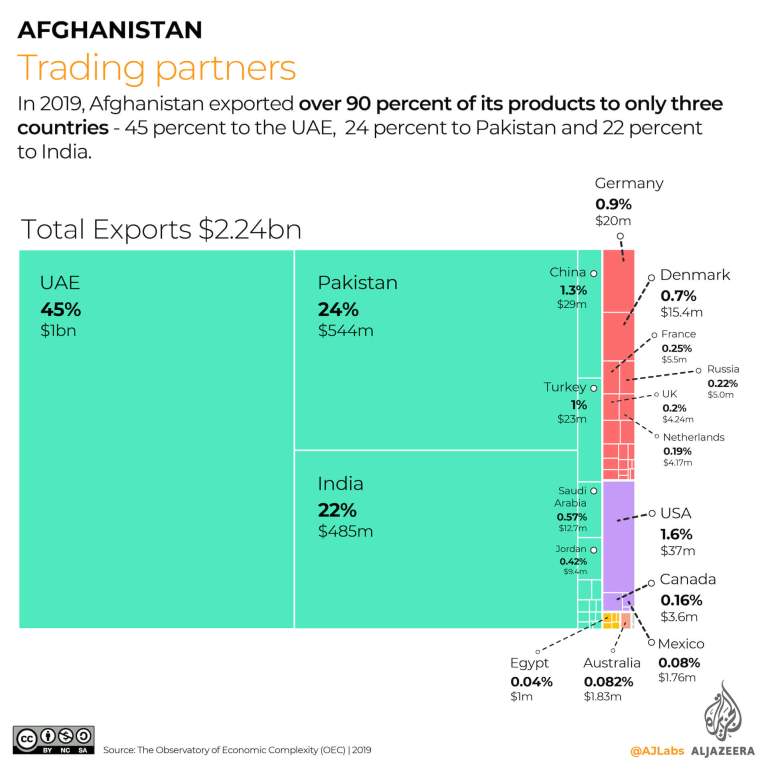Mapping Afghanistan’s untapped natural resources
Afghanistan is believed to hold more than $1 trillion worth of mineral resources and metals but faces many challenges in tapping them.
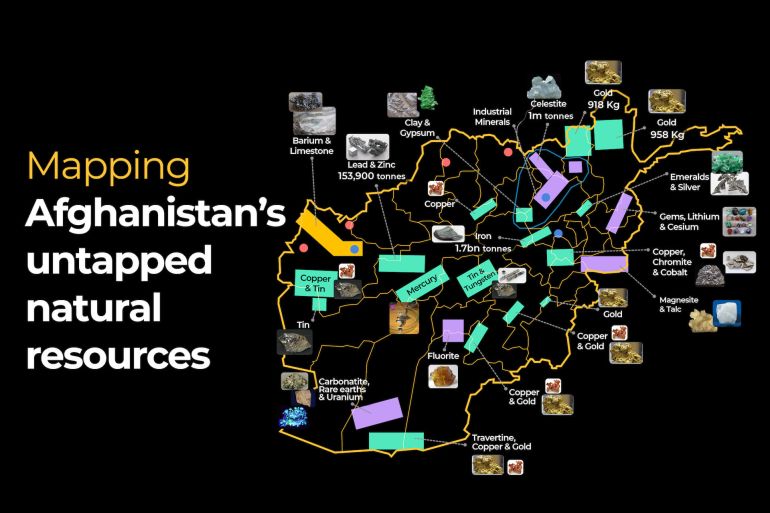
Deep beneath the ground in one of the world’s poorest countries sits at least $1 trillion of untapped mineral resources, according to a report published by Afghanistan’s Ministry of Mines and Petroleum [PDF]. The South Asian country of 38 million people is estimated to hold more than 2.2 billion tonnes of iron ore, 1.3 billion tonnes of marble and 1.4 million tonnes of rare earth minerals.
According to Scott Montgomery, a geologist who has studied the extent of Afghanistan’s resources, the country requires a minimum of seven to 10 years to develop large-scale mining to become a major source of revenue.
Keep reading
list of 4 itemsSatellite images reveal Israeli destruction of hospitals in Gaza
Mapping Israel-Lebanon cross-border attacks
Eid Mubarak: Hear greetings in different languages
Poor security, weak legislation and corruption have prevented the development of the mining sector.
What lies beneath the ground?
During the 1960s and 1970s the USSR and its Eastern European allies conducted extensive surveys of the country’s geological resources. However, decades of war meant that most resources remained buried.
In 2010, the United States Geological Survey (USGS) together with Afghanistan Geological Survey (AGS) conducted the most comprehensive geological survey of the country identifying 24 specific areas of interest (AOI) across Afghanistan’s 34 provinces.
The areas of interest are colour-coded on the map below. They include: valuable metal reserves (green), building material reserves (yellow), industrial mineral reserves (purple) and areas with oil and gas (red).
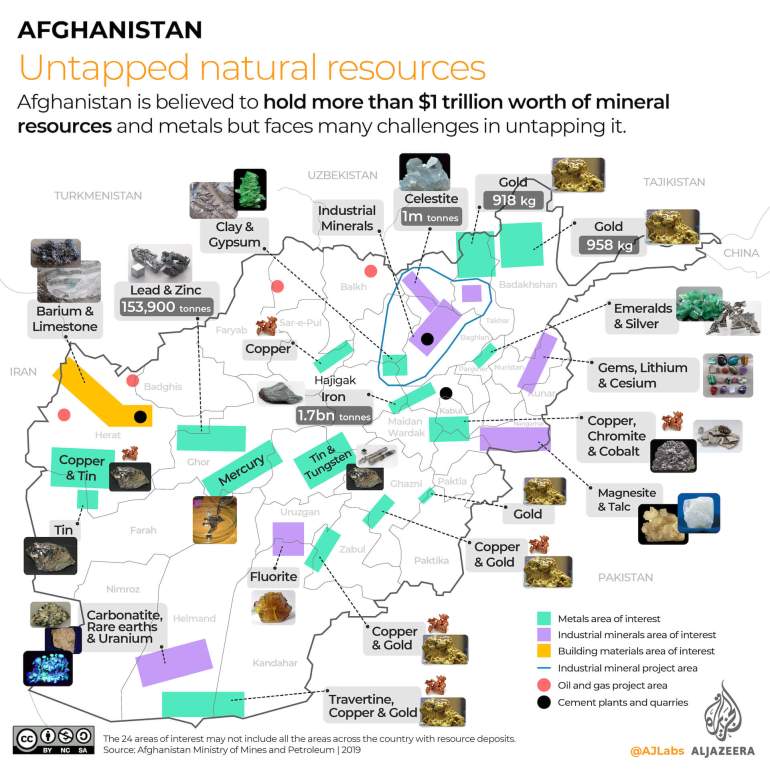
Valuable metals
Iron is the most abundant of Afghanistan’s valuable metals. The total iron ore reserve is estimated to be 2.2 billion metric tonnes, placing Afghanistan among the top 10 countries in extractable iron.
The Hajigak mine located in the mountainous Bamyan province, 130km (80 miles) west of Kabul, has the largest iron ore deposit in the region with 1.7 billion tonnes of high-grade ore at 63-69 percent iron.
To put that in context, 2.2 billion tonnes of iron ore could be used to construct at least 200,000 replicas of Paris’s Eiffel Tower – the iconic monument which stands at 324m (1,063 feet) and was constructed from 7,300 tonnes of iron in 1889.
The country is also estimated to have 183 million tonnes of aluminum deposits found mainly in Badakhshan and Kandahar provinces. The lightweight metal is the second most used metal globally, behind only iron.
Afghanistan also holds an estimated 2,698kg of gold deposits along two main gold belts: Badakhshan southwest to Takhar and Ghazni southwest to Zabul. This amount of gold can mint at least 300,000 gold pound coins each weighing eight grams.
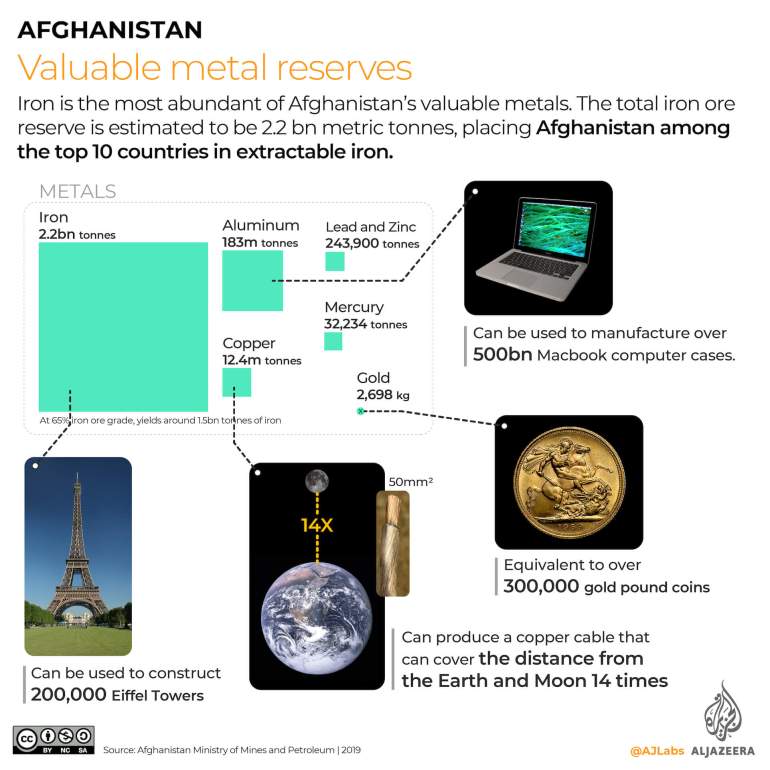
Building materials
Afghanistan is the eighth most mountainous country in the world making many parts difficult to access. The Hindu Kush Himalayas span the northeast of the landlocked country and contain various minerals and stones including marble, limestone and sandstone which are used widely in construction.
Marble is a versatile rock commonly used in architecture and sculpture. The country yields an impressive 1.3 billion tonnes of the beautiful building stone which is enough marble to build 13,000 Washington Monuments – standing at 169m (555 ft) tall and 17m (55 feet) wide. Nangarhar province which borders Pakistan is known for its pink onyx marble which is among the most sought-after in the region.
Limestone and sandstone are common types of sedimentary rock used widely in construction. Limestone is an essential component of cement and is a major ingredient in household products such as toothpaste and paint.
Afghanistan is estimated to have at least 500 million tonnes of limestone found mainly in the provinces of Badakhshan, Herat and Baghlan.
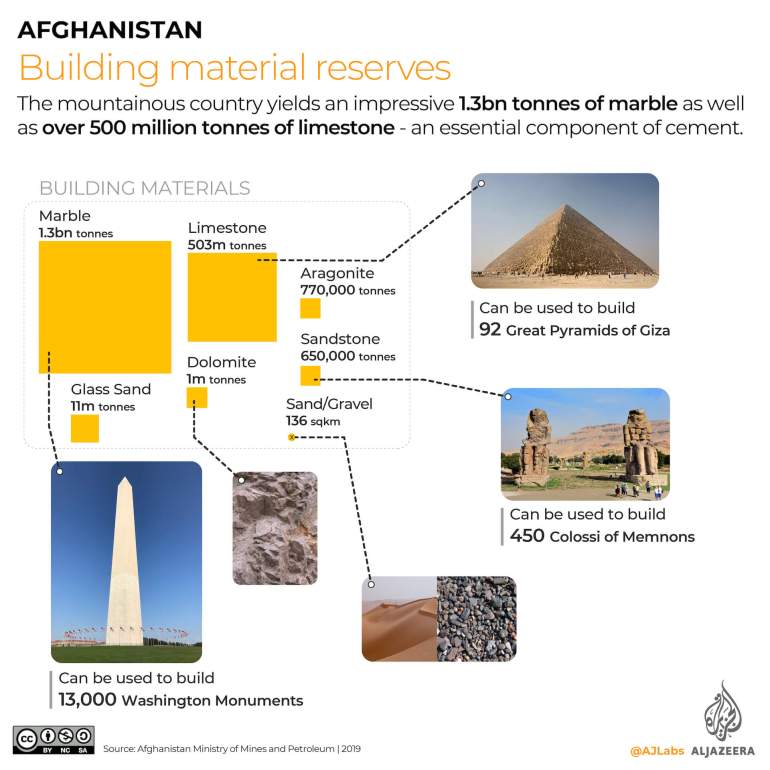
Industrial minerals
Afghanistan was historically one of the world’s premier sources of lapis lazuli, emeralds and rubies. Most of the gemstones are found in the northeast of the country.
Afghanistan has an estimated 1.4 million tonnes of rare earth minerals including lithium (used in batteries), uranium (used for nuclear fuel) and many others. One of the largest deposits of rare earth minerals can be found at Khanneshin in Helmand province.
The country also has an estimated 152 million tonnes of barite, a colourless mineral commonly used by the oil and gas industry in drilling.
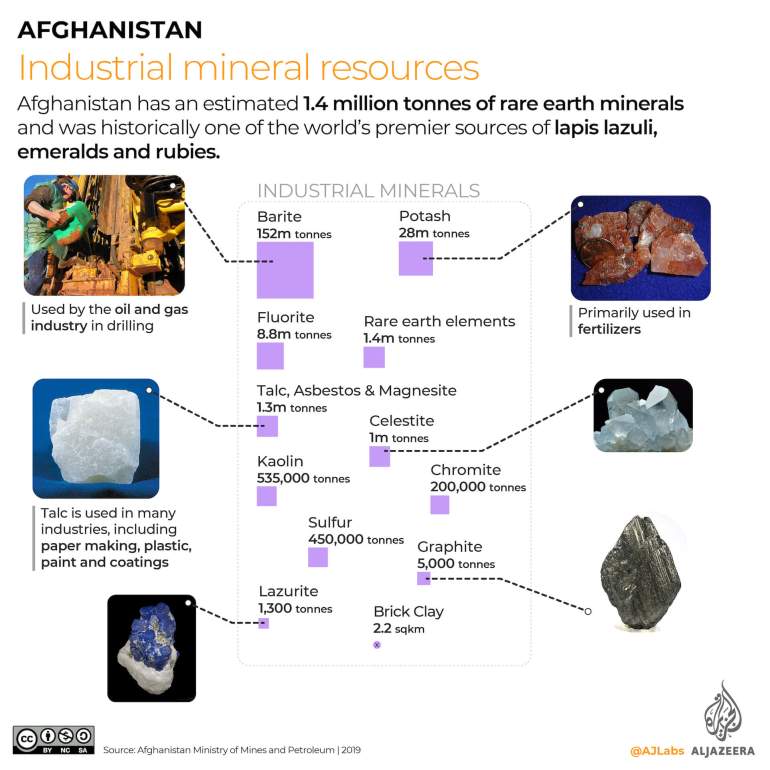
Exports and trading partners
According to The Observatory of Economic Complexity (OEC), Afghanistan’s total exports in 2019 reached $2.24bn.
The top three categories were:
- Precious metals, gems and jewellery: 45 percent ($1 billion)
- Fruits and nuts, peel of citrus fruit: 24 percent ($538 million)
- Vegetables, certain roots and tubers: 8 percent ($177 million)
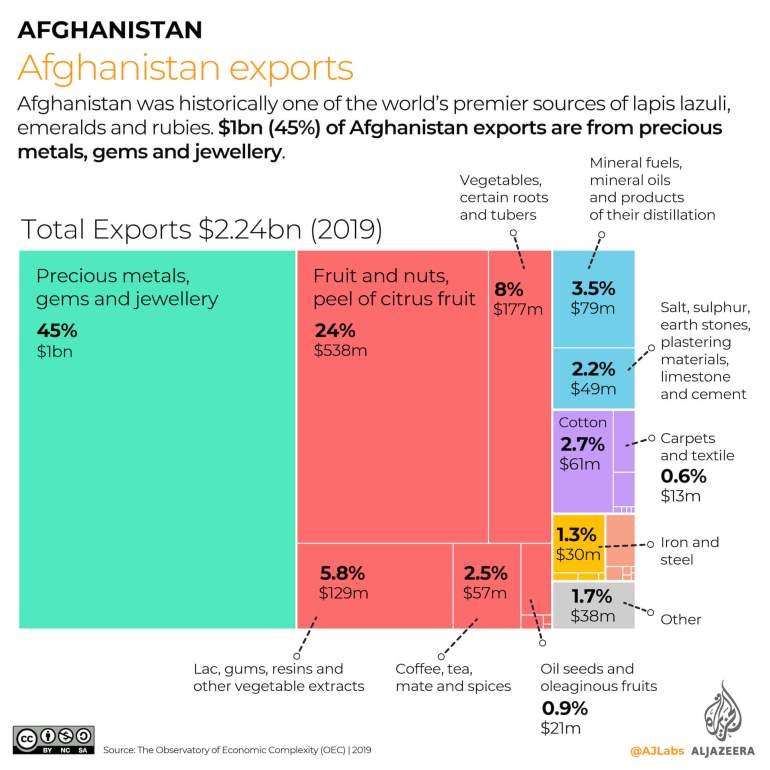
In 2019, Afghanistan exported more than 90 percent of its products to only three countries – 45 percent to the UAE, followed by 24 percent to neighbouring Pakistan and 22 percent to India.
Since the Taliban seized control of the country on August 15, 2021, Western states have severely restricted their aid payments to the country.
On September 2, the Taliban said that the group would rely primarily on financing from China which already holds several long-term mining leases around the country.
